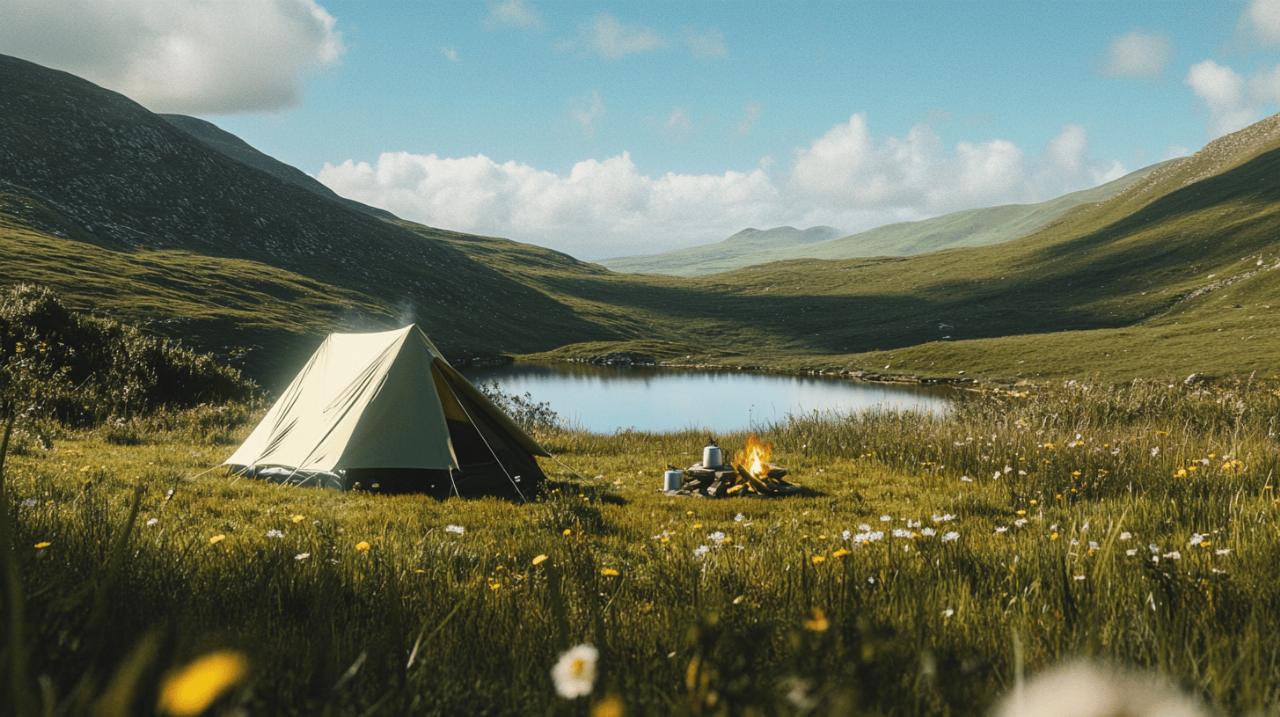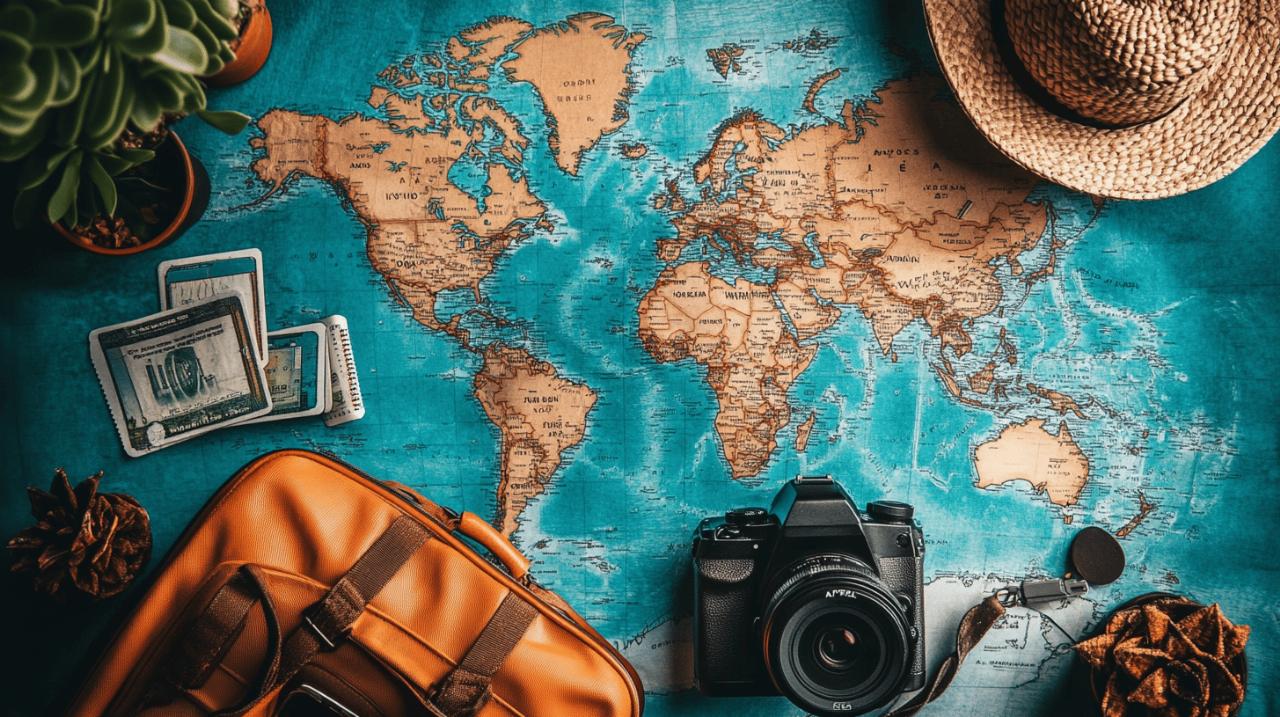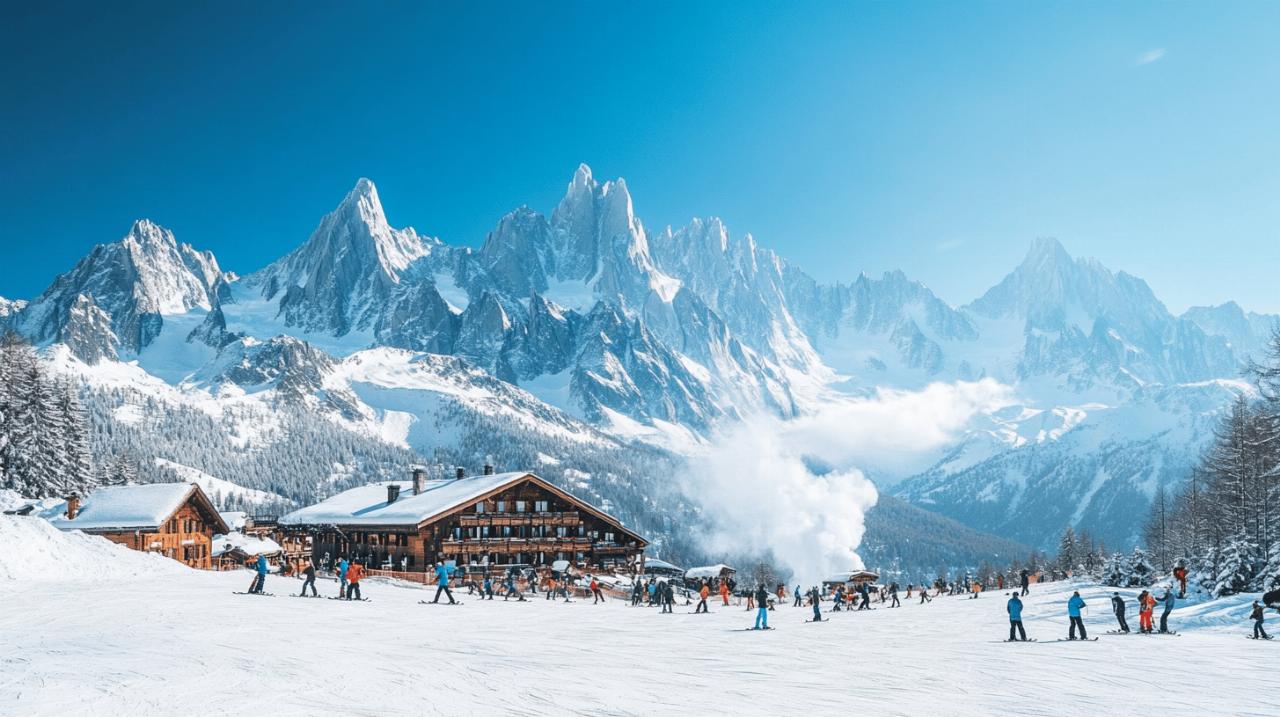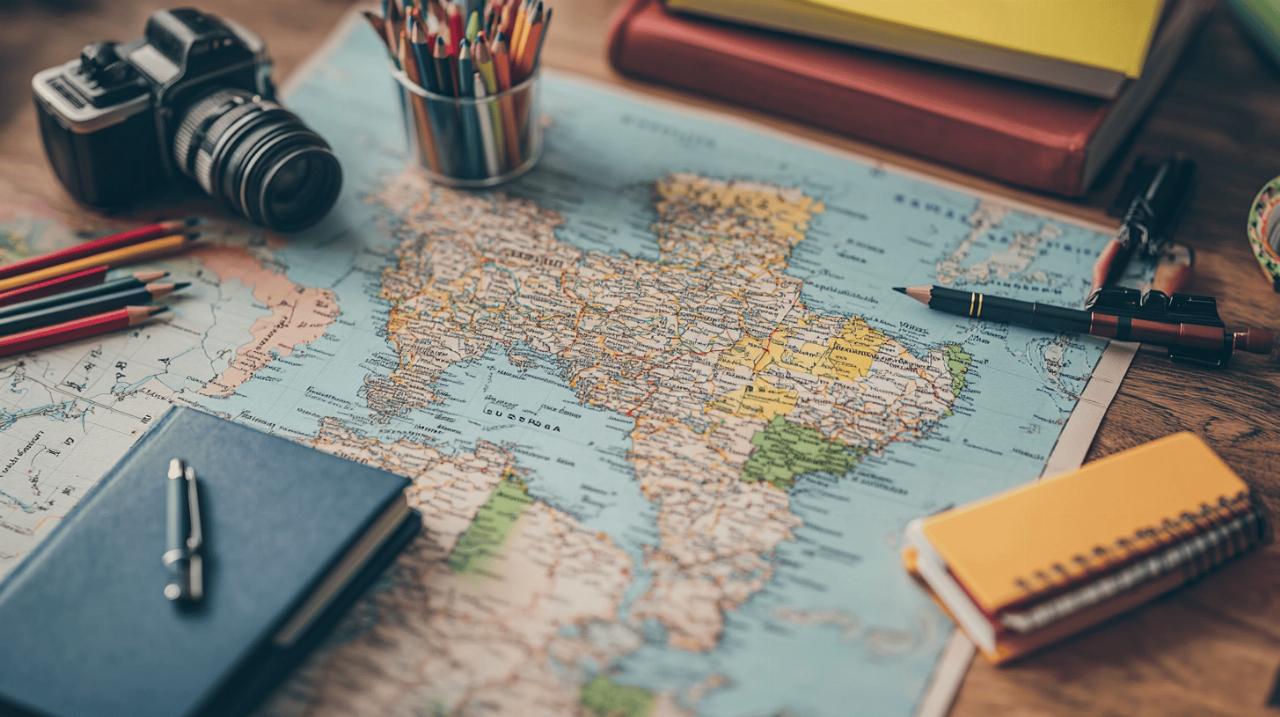The Complete Guide to Camping in Ireland: From Coastal Campsites to Lakeside Pitches
Ireland, with its emerald landscapes, rugged coastlines, and serene lakes, beckons adventurers seeking an escape into nature. Whether you are an experienced camper or someone looking to try pitching a tent for the first time, the Emerald Isle offers a wealth of opportunities to explore its diverse terrain. From the dramatic cliffs along the Wild Atlantic Way to the peaceful shores of inland waters, camping in Ireland is an experience that combines stunning scenery with a sense of freedom and connection to the outdoors. This guide will help you navigate the best spots, understand the options available, and plan a memorable camping adventure across this beautiful country.
Exploring ireland's premier camping destinations
Coastal gems: pitching along the wild atlantic way
The Wild Atlantic Way is arguably one of the most spectacular coastal routes in the world, stretching over two thousand five hundred kilometres along Ireland's western seaboard. For those who love the sound of crashing waves and the salty breeze, this route is a treasure trove of camping opportunities. Imagine setting up your tent near the dramatic Cliffs of Moher, where the Atlantic Ocean meets towering rock faces, or exploring the ancient history and unique culture of the Aran Islands. The charming town of Clifden, nestled in County Mayo, offers access to some of the most picturesque coastal campsites in the region. Clifden Eco Beach Camping is a prime example, providing a sustainable and scenic spot where you can wake up to the sound of the sea. The coastline is dotted with numerous other campsites, each offering a unique vantage point to appreciate the wild beauty of Ireland's western edge. Whether you are hiking along coastal paths, trying your hand at water sports, or simply enjoying the craic in a nearby village, the Wild Atlantic Way is an essential destination for any camping enthusiast. The variety of landscapes, from sandy beaches to rocky outcrops, ensures that every pitch offers something different, making it an ideal location for those seeking both adventure and tranquillity.
Lakeside serenity: tranquil spots in ireland's heartland
For those who prefer a quieter, more sheltered camping experience, Ireland's heartland offers a collection of lakeside campsites that are perfect for relaxation and reflection. Killarney National Park, located in County Kerry, is renowned for its stunning scenery, combining mountains, forests, and the serene waters of its lakes. Camping here provides an opportunity to immerse yourself in nature, with activities such as hiking, cycling, and wildlife spotting readily available. County Wicklow, often referred to as the Garden of Ireland, is another excellent choice for lakeside camping. Hidden Valley Holiday Park is a popular spot that combines the tranquillity of the countryside with modern facilities, making it suitable for families and those seeking a more comfortable camping experience. The calm waters of Ireland's lakes offer a peaceful contrast to the often blustery coastal areas, and the surrounding woodlands and fields provide ample opportunities for exploration. Whether you are fishing, kayaking, or simply enjoying a picnic by the water's edge, the lakeside campsites in Ireland's heartland offer a restorative escape from the hustle and bustle of everyday life. The Irish Forestry Service, known as Coillte, manages extensive forests that are ideal for camping, and many of these areas are located near lakes and rivers, providing a perfect blend of woodland and waterside experiences.
Choosing your perfect irish campsite
Traditional campsites versus glamping experiences
When planning a camping trip to Ireland, one of the first decisions you will need to make is the type of accommodation that best suits your needs. Traditional campsites, where you pitch your own tent or park your campervan, are widely available and offer a more authentic outdoor experience. These sites range from basic pitches with minimal facilities to well-equipped caravan parks that provide electric hookups, shower blocks, and laundry facilities. For those who prefer a bit more comfort without sacrificing the outdoor experience, glamping has become increasingly popular in recent years. Glamping sites offer a range of luxurious options, including yurts, bell tents, and even mobile home hires, allowing you to enjoy the beauty of the Irish countryside with a touch of indulgence. These sites often come with pre-erected tents, comfortable bedding, and sometimes even cooking equipment, making them an excellent choice for families or those new to camping. Many glamping sites also prioritise sustainability, offering eco-friendly options that allow you to enjoy nature responsibly. Whether you choose a traditional campsite or a glamping experience, it is important to consider what facilities and amenities are most important to you. Some sites cater specifically to families, with playgrounds and entertainment options, while others are designed for couples or solo travellers seeking peace and solitude. Dog-friendly campsites are also widely available, ensuring that your four-legged friends can join in the adventure.
Understanding facilities, prices, and seasonal availability
The cost of camping in Ireland can vary significantly depending on the type of campsite and its location. Basic campsites with minimal facilities are the most budget-friendly, with prices sometimes starting as low as twenty euros per night. More developed caravan parks and glamping sites, which offer a wider range of amenities such as electric hookups, dump stations, and on-site shops, typically cost between thirty and thirty-five euros per night. Some premium glamping sites with luxurious facilities can command even higher prices, particularly during peak season. It is worth noting that many campsites approved by the Tourist Board undergo regular inspections to ensure they meet certain standards, providing peace of mind for campers. Seasonal availability is another important consideration when planning your trip. The summer months, particularly July and August, are the busiest times for camping in Ireland, and many popular sites can be fully booked weeks or even months in advance. If you are planning to visit during this period, it is highly recommended to make reservations early. Outside of peak season, you may find greater availability and lower prices, although some campsites may have reduced facilities or shorter opening hours. Checking user reviews can provide valuable insights into the value for money offered by different sites, as well as honest opinions about the quality of facilities and the overall experience. Many campsites also offer options for campsite reservations through their websites or through camping apps, making it easier to plan and secure your pitch.
Planning your irish camping adventure
Essential Kit and Practical Tips for Irish Weather
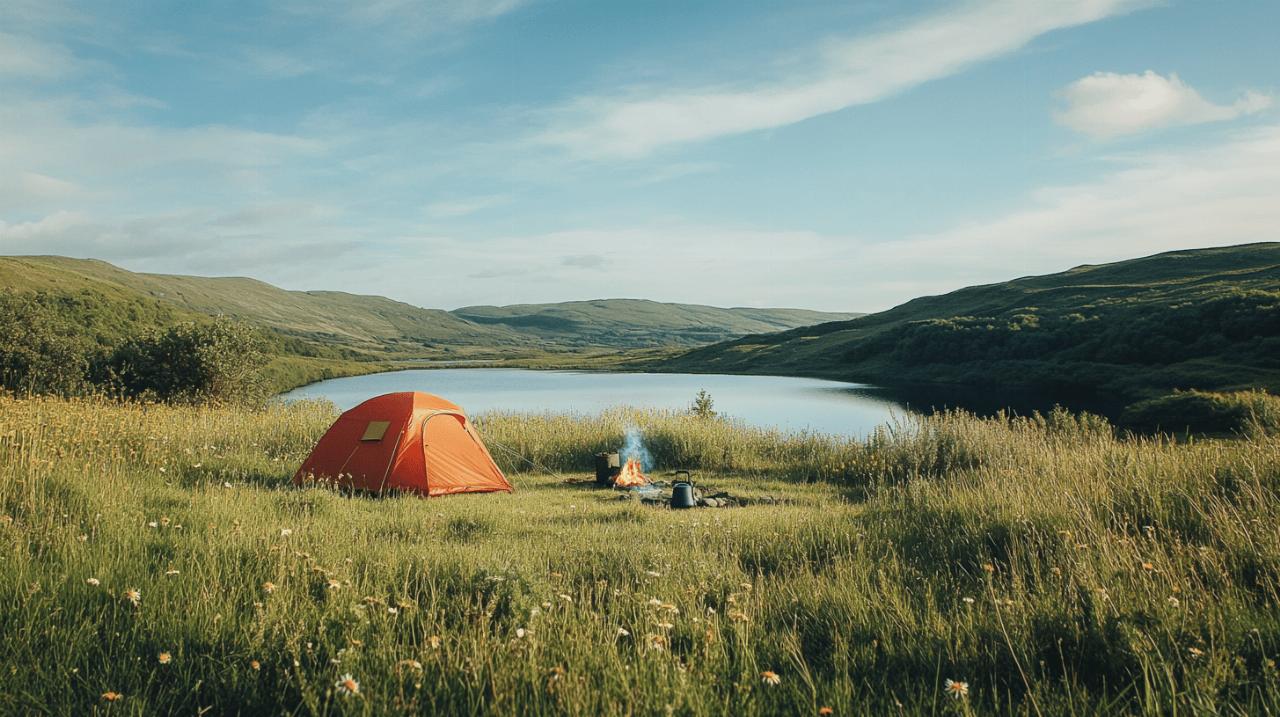 Ireland's weather is famously unpredictable, and being well-prepared is essential for a comfortable camping experience. Even during the summer months, temperatures can be cool, and rain is a frequent visitor, so packing the right gear is crucial. A high-quality, waterproof tent is a must, and many experienced campers recommend models such as the Zpacks Altaplex tent, which is lightweight yet durable enough to withstand Ireland's sometimes harsh conditions. If you are camping in a campervan or motorhome, you will benefit from the added protection and convenience these vehicles provide, particularly during wet weather. A comprehensive packing list should include warm clothing, waterproof jackets, sturdy footwear, and a reliable sleeping bag rated for cooler temperatures. Kitchen supplies, such as portable stoves, cooking utensils, and food storage containers, are also essential, especially if you are wild camping and do not have access to on-site facilities. Toiletries, including biodegradable soap and sunscreen, should not be overlooked, and electronics such as torches, power banks, and cameras will help you capture and navigate your adventure. It is also advisable to bring a map and compass, as mobile phone signal can be unreliable in more remote areas. For those planning to engage in outdoor adventures such as hiking or cycling, appropriate gear such as hiking boots, rain covers for backpacks, and first aid supplies should be included. Being prepared for all weather conditions will ensure that you can enjoy your trip regardless of what the skies bring.
Ireland's weather is famously unpredictable, and being well-prepared is essential for a comfortable camping experience. Even during the summer months, temperatures can be cool, and rain is a frequent visitor, so packing the right gear is crucial. A high-quality, waterproof tent is a must, and many experienced campers recommend models such as the Zpacks Altaplex tent, which is lightweight yet durable enough to withstand Ireland's sometimes harsh conditions. If you are camping in a campervan or motorhome, you will benefit from the added protection and convenience these vehicles provide, particularly during wet weather. A comprehensive packing list should include warm clothing, waterproof jackets, sturdy footwear, and a reliable sleeping bag rated for cooler temperatures. Kitchen supplies, such as portable stoves, cooking utensils, and food storage containers, are also essential, especially if you are wild camping and do not have access to on-site facilities. Toiletries, including biodegradable soap and sunscreen, should not be overlooked, and electronics such as torches, power banks, and cameras will help you capture and navigate your adventure. It is also advisable to bring a map and compass, as mobile phone signal can be unreliable in more remote areas. For those planning to engage in outdoor adventures such as hiking or cycling, appropriate gear such as hiking boots, rain covers for backpacks, and first aid supplies should be included. Being prepared for all weather conditions will ensure that you can enjoy your trip regardless of what the skies bring.
Booking strategies and peak season considerations
Securing a pitch at your chosen campsite requires some strategic planning, particularly if you are visiting during the busy summer months or public holidays. Many of the best campsites in Ireland, such as those located in popular areas like County Wicklow or along the Wild Atlantic Way, can fill up quickly, so it is advisable to book as far in advance as possible. Using camping apps such as Park4Night and iOverlander can help you identify suitable spots and check availability, while Google Maps can also be a useful tool for finding campsites and planning routes. Some campsites offer the option to reserve a specific pitch, which can be beneficial if you have particular requirements, such as electric hookups or proximity to shower blocks. For those interested in wild camping, it is important to be aware of the legal restrictions and local regulations. While wild camping is technically legal in many parts of Ireland, it is restricted in certain areas, and obeying signs that indicate no overnight parking is essential to avoid fines or confrontations. Apps like Park4Night can help you find safe and legal spots for discreet camping, and the advice from experienced campers is to follow the principle of being out of sight and out of mind. Camping in Coillte forests is a popular option, as the forestry service manages extensive woodlands that are ideal for camping, and staff members are often helpful and may even suggest suitable spots. If you are planning a long-distance trek, such as following the E8 Long Distance Trail from Dublin to Cork, having a well-planned route and a map of camping spots can make the journey much smoother. Flexibility is also important, as weather conditions or other factors may require you to adjust your plans on the go.
Scenic routes and must-visit locations
Navigating ireland's most spectacular camping routes
Ireland is home to some of the most breathtaking scenic routes in Europe, and camping along these routes offers a unique way to experience the country's natural beauty. The Wild Atlantic Way is undoubtedly the most famous, offering stunning coastal views, charming villages, and a wealth of opportunities for hiking, cycling, and water sports. Stretching from County Donegal in the north to County Cork in the south, this route takes you through a diverse range of landscapes, from windswept cliffs to sheltered bays. Another notable route is the Causeway Coastal Route in Northern Ireland, which connects the city of Belfast to the famous Giant's Causeway, a UNESCO World Heritage Site known for its unique hexagonal basalt columns. The Ring of Kerry, a circular route in County Kerry, is another must-do for campers, offering panoramic views of mountains, lakes, and coastline. For those interested in long-distance trekking, the E8 Long Distance Trail is an excellent choice. This trail runs from Dursey Island in Cork all the way to Istanbul in Turkey, although most campers focus on the Irish section, which covers approximately six hundred and fifty kilometres from Dublin to Cork. Following this trail provides an immersive experience of Ireland's countryside, with opportunities for forest camping and discreet wild camping along the way. Planning your route using camping apps and tools such as Google Maps can help you identify campsites, water sources, and other essential facilities. Many experienced campers also recommend camping away from established trails to minimise your impact on the environment and to enjoy a more secluded experience.
Hidden treasures: lesser-known campsites worth discovering
While the popular campsites along the Wild Atlantic Way and in well-known national parks attract many visitors, Ireland is also home to a number of lesser-known campsites that offer equally stunning scenery and a more tranquil atmosphere. Maddybenny Campsite in Northern Ireland is one such hidden gem, located in a picturesque rural setting that is perfect for those seeking peace and quiet. This site offers excellent facilities, including clean shower blocks and electric hookups, making it a comfortable base for exploring the surrounding countryside. In County Mayo, there are numerous small, family-run campsites that provide a warm Irish welcome and a more personal touch. These sites may not have all the amenities of larger caravan parks, but they more than make up for it with their charm and hospitality. Belleek and Slane are two other areas worth exploring, offering a mix of cultural attractions and outdoor pursuits. Camping in Coillte forests is another way to discover hidden treasures, as these woodlands are often less crowded than coastal campsites and provide a serene environment for relaxation and exploration. Using apps like Park4Night and iOverlander can help you uncover these lesser-known spots, as they often feature reviews and recommendations from other campers who have discovered hidden gems off the beaten track. Whether you are looking for a secluded lakeside pitch or a quiet woodland clearing, Ireland's diverse landscape ensures that there is always a new and exciting place to discover. By venturing beyond the most popular destinations, you can experience a side of Ireland that is often overlooked, and enjoy the freedom and adventure that comes with exploring the road less travelled.
